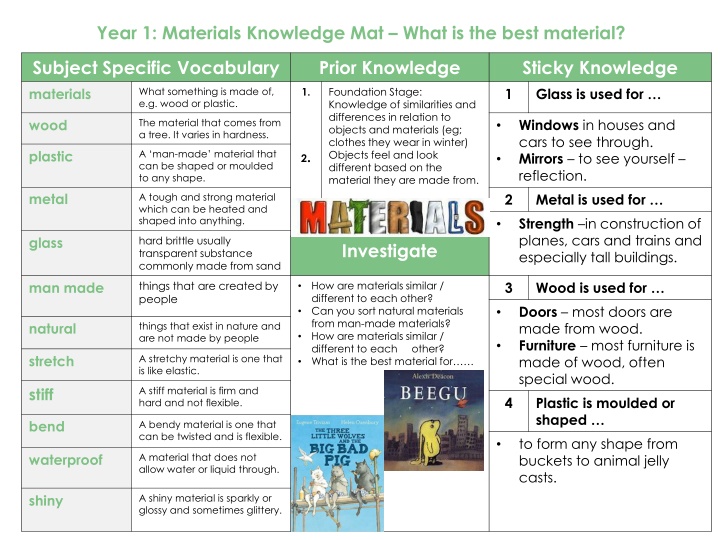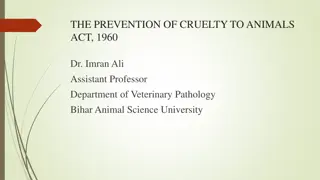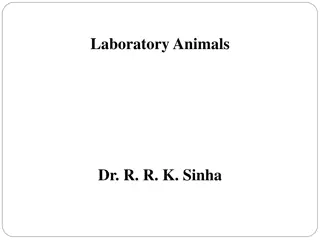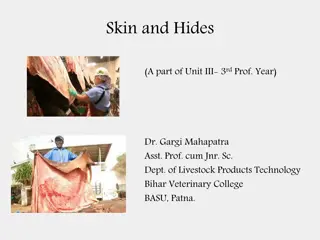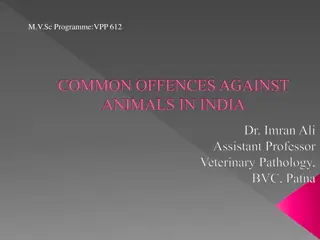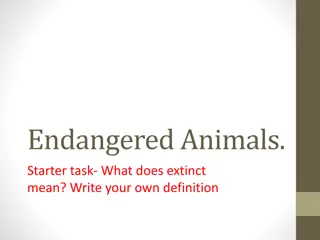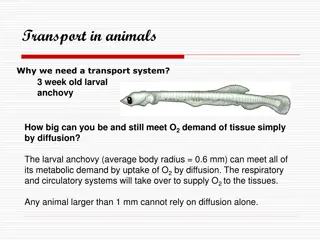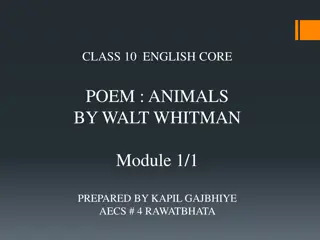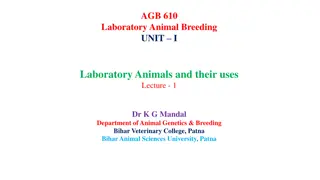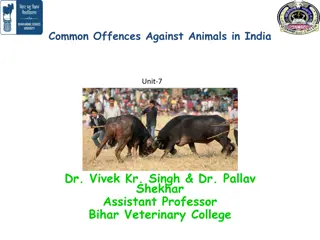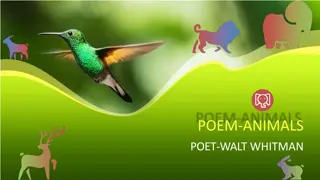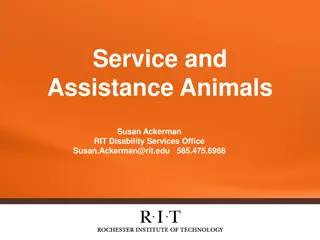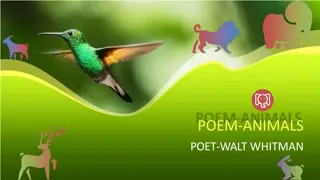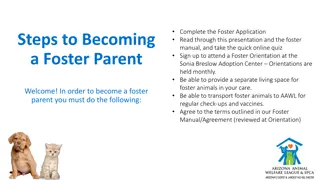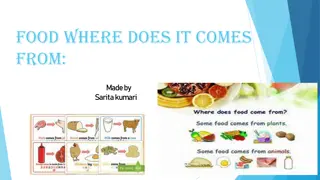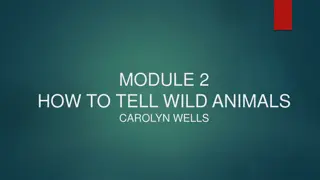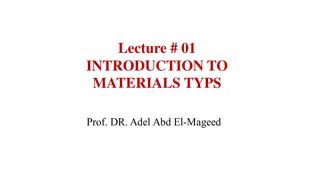Year 1: Materials and Animals Knowledge
In Year 1, students explore materials such as wood, plastic, and metal, learning about their properties and best uses. They also delve into the world of animals, differentiating between vertebrates and invertebrates, understanding characteristics of mammals, birds, fish, reptiles, and amphibians. Through observation and research, they identify, group, and care for animals, enhancing their understanding of the natural world.
Uploaded on Feb 24, 2025 | 0 Views
Download Presentation

Please find below an Image/Link to download the presentation.
The content on the website is provided AS IS for your information and personal use only. It may not be sold, licensed, or shared on other websites without obtaining consent from the author.If you encounter any issues during the download, it is possible that the publisher has removed the file from their server.
You are allowed to download the files provided on this website for personal or commercial use, subject to the condition that they are used lawfully. All files are the property of their respective owners.
The content on the website is provided AS IS for your information and personal use only. It may not be sold, licensed, or shared on other websites without obtaining consent from the author.
E N D
Presentation Transcript
Year 1: Materials Knowledge Mat What is the best material? Subject Specific Vocabulary materials e.g. wood or plastic. wood a tree. It varies in hardness. plastic can be shaped or moulded to any shape. metal which can be heated and shaped into anything. Prior Knowledge Sticky Knowledge Glass is used for 1 1. Foundation Stage: Knowledge of similarities and differences in relation to objects and materials (eg; clothes they wear in winter) Objects feel and look different based on the material they are made from. What something is made of, Windows in houses and cars to see through. Mirrors to see yourself reflection. Metal is used for Strength in construction of planes, cars and trains and especially tall buildings. The material that comes from A man-made material that 2. 2 A tough and strong material glass hard brittle usually transparent substance commonly made from sand Investigate man made 3 Wood is used for Doors most doors are made from wood. Furniture most furniture is made of wood, often special wood. Plastic is moulded or shaped to form any shape from buckets to animal jelly casts. things that are created by people How are materials similar / different to each other? Can you sort natural materials from man-made materials? How are materials similar / different to each other? What is the best material for natural things that exist in nature and are not made by people stretch A stretchy material is one that is like elastic. stiff A stiff material is firm and hard and not flexible. 4 bend A bendy material is one that can be twisted and is flexible. waterproof A material that does not allow water or liquid through. shiny A shiny material is sparkly or glossy and sometimes glittery.
Year 1: Animals Knowledge Mat Am I an animal? Subject Specific Vocabulary Prior knowledge Sticky Knowledge about animals fish The names of some common animals. The parts of the human body and how they are associated with each sense. A fish is a scaly skinned creature with a spine that swims in water and breathes using gills. What are vertebrates? Vertebrates are animals that have a backbone. There are five groups of vertebrates: mammals, fish ,birds, reptiles, amphibians amphibians All amphibians begin their life in water with gills and tails. Examples are frogs and newts. What are mammals? They give birth to live young, usually have hair or fur, warm-blooded, cannot breathe underwater. Some common mammals are pets such as dogs, cats, hamsters; farm animals such as cows, sheep and horses; wild animals such as foxes, hedgehogs, lions and giraffes and humans. reptiles Are animals that are cold-blooded. Most lay eggs and their skin is covered with hard, dry scales. Investigate birds Birds have feathers and wings. They lay eggs and are warm-blooded animals. What are fish? They have fins and scales; breathe underwater using gills; lay eggs in water and are cold-blooded. Some common fish are salmon, cod and tuna. mammals use observations in the local environment to compare animals or through videos and photographs describe how to identify and group animals group animals according to what they eat research how to take care of animals taken from the local environment and how to return them safely Mammals are also warm blooded animals. They breath air and have a backbone. some common mammals are: pets such as dogs, cats, hamsters farm animals such as cows, sheep and horses wild animals such as foxes, hedgehogs, lions and giraffes humans What are birds? They are warm-blooded; have wings and beaks; have feathers and lay eggs. Some common birds are ducks, chickens, penguins and pigeons. What are reptiles? They are cold-blooded; lay eggs; have scales and cannot breathe underwater. Some common reptiles are snakes and lizards. carnivore A carnivore is a meat-eating animal that gets its food from killing other animals. herbivore omnivore vertebrates A herbivore eats plants. What are amphibians? They are cold-blooded; lay eggs; live on land and water and can breathe underwater through gills. Some common amphibians are frogs and toads. An omnivore eats plants and meat. Vertebrates are animals that have a backbone. There are five groups of vertebrates: What are invertebrates? Invertebrates are animals that do not have a backbone such as flies, ladybirds and bees; arachnids such as spiders and molluscs such as snails . Invertebrates Invertebrates are animals that do not have a backbone.
Year 1: Plants Knowledge Mat - Are all leaves the same? Subject Specific Vocabulary seed new plant grows bulbs usually formed underground. Prior Knowledge Sticky Knowledge about plants Make observations of plants and know that plants grow Talk about how plants can change the small, hard part from which a The names of some common garden plants People may grow plants in their gardens and care for them. They may grow flowering plants which are beautiful to look at or beans and seeds to grow plants for food. When plants are grown for food, this may be called a herb garden or vegetable patch. Common garden plants such as roses, poppies and sunflowers The resting stage of a plant that is deciduous Deciduous is the name given to trees that lose their leaves in autumn and are bare in the winter. evergreen Evergreen is the name of trees that have leaves all year round. Investigate! trunk the large main stem from which the branches grow The names of some common wild plants A wild plant will grow by itself. It does not need to be cared for. If it grows somewhere unwanted, it may be a weed. Common wild plants such as dandelions, daisies, buttercups and nettles. roots the parts of a plant that grow under the ground Plant a bean or a seed and watch it grow. Record your observations in a diary. Go on a wild plant hunt! Create a tally chart to show how many of each plant you have found and then use the information to answer questions. Go on a tree hunt around the School grounds - what types of trees can you see? Collect fallen leaves and identify which tree they came from using pictures to help you. Sort the leaves between deciduous and evergreen trees. leaf/leaves the parts of a tree or plant that are flat, thin, and usually green Deciduous and evergreen trees Deciduous trees lose their leaves in the autumn every year. Their leaves are generally broad, flat and have veins running through them. Evergreen trees have green leaves all year round. Their leaves are generally thick, waxy and narrow like needles. flowers the part of a plant which is often brightly coloured and grows at the end of a stem petal thin coloured or white parts which form part of the flower garden a piece of land next to a house, with flowers, vegetables, other plants, and often grass What are the parts of common trees and plants? wild plants that live or grow in natural surroundings and are not looked after by people vegetable A vegetable is a plant or part of a plant which is used as food, for example cabbage or potato. weed a wild plant that grows in garden and prevents the plants that you want from growing properly
Year 1: Seasonal Change Knowledge Mat Subject Specific Vocabulary Prior Knowledge Sticky Knowledge about seasonal change Autumn They talk about the features of their own immediate environment and how environments might vary from one another. They can talk about the changes that happen in these environments The time of year between September and November. Many leaves fall off the trees. Spring The time of year between March and May. There is usually lots of signs of new growth in Spring. In the UK we have four seasons: spring, summer, autumn and winter. Summer is the hottest season and winter the coldest. Summer The hottest season in the UK. It happens between June and August. The longest day is June 21st. Spring starts when the day and night are the same length (usually 21stMarch. However, many say that Spring starts on March 1st). Investigate Winter The coldest season in the UK. We can have snow in this season. It occurs between December and February. seasons Go on a wild plant hunt and observe the changes in each season Go on a tree hunt in the school grounds and identify the colour and shape of the leaves in the different seasons. The seasons are four different times during the year with different types of weather. In summer the longest day of the year is around June 21stand in winter the shortest day of the year is usually December 21st. weather Weather is what the sky and the air outside are like, such as cold and cloudy. temperature It is measurement of hot or cold that can be measured using a thermometer. When we have our summer it is winter in the southern hemisphere. When we have our winter Australia has its summer. thermometer This is the instrument that measures the temperature. weather symbol In the USA and many other countries the season Autumn is known as the Fall . This is because so many leaves fall from the trees in Autumn. These are signs used to help us understand more about our daily weather. day the part of a day when it is light; the time between sunrise and sunset night Seasons change throughout the year because of the way the Earth travels around the Sun. the time after sunset and before sunrise while it is dark outside (no sunlight is visible).
